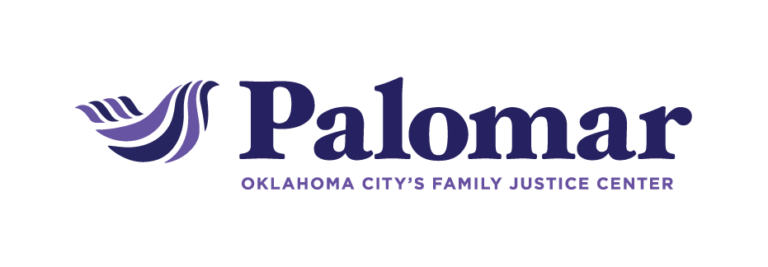Get Help for Teens
As Martin Luther King, Jr. says, “The time is always right to do what is right.” There are programs available in our community to help those who have committed or exhibit violent, abusive or controlling behavior in their relationship and want to put an end to it. The programs listed below are available to help participants learn healthy, alternative, non-abusive ways to deal with their emotions.
How to get help
Who to talk to?
- If you need help right away and are in danger, call 911. Tell them your name and where you are so they can get you help.
- If you or someone you know is being abused, talk to an adult you or your friend can trust — a family member, a trusted teacher, a doctor, or a school or religious youth counselor. Many teachers and counselors have training in how to recognize and report abuse. If the first adult you tell does not seem to listen, keep telling adults until someone responds.
How to help a friend
- Calmly start a conversation on a positive note
- Be supportive
- Focus on the unhealthy behaviors
- Keep the conversation friendly, not preachy
- Don’t place the blame on your friend
- Allow your friend to make their own decision
- Offer solutions to your friend
- Expect more conversations in the future
Warning Signs
- Withdrawal from friends or usual activities
- Changes in behavior — such as aggression, anger, hostility or hyperactivity — or changes in school performance
- Depression, anxiety or unusual fears, or a sudden loss of self-confidence
- Sleep problems and nightmares
- An apparent lack of supervision
- Frequent absences from school
- Rebellious or defiant behavior
- Self-harm or attempts at suicide
- Unexplained injuries, such as bruises, broken bones (fractures) or burns
- Injuries that don’t match the given explanation
- Injuries that aren’t compatible with the child’s developmental ability
- Delayed or inappropriate emotional development
- Loss of self-confidence or self-esteem
- Social withdrawal or a loss of interest or enthusiasm
- Avoidance of certain situations, such as refusing to go to school or ride the bus
- Appears to desperately seek affection
- A decrease in school performance or loss of interest in school
- Loss of previously acquired developmental skills
What are the types of abuse?
Physical Abuse
Physical abuse is when someone intentionally uses physical force to cause harm. Sometimes physical abuse may not leave a bruise or other outward sign, but it is still unhealthy and never deserved.
Examples of physical abuse include:
- Scratching, biting, or kicking
- Slapping, punching
- Choking or strangling
- Throwing things
- Pulling your hair
- Pushing, pulling or shoving
- Using a weapon
Emotional Abuse
Emotional abuse can be verbal offenses, threats, bullying, humiliation, intimidation, or any non-physical abuse used to control another person.
Examples of emotional abuse include:
- Putting you down, teasing in a way that makes you feel bad about yourself
- Yelling and screaming
- Belittling your ideas or needs
- Treating you like a child, telling you how to behave and what to wear
- Accusing you of things that aren’t true or blaming you for their problems or behavior
- Repeatedly checking your cell phone or online communications
- Possessiveness, jealousy
- Stalking you
- Threatening to harm you or people you care about
- Manipulating you to stay in the relationship
- Repeatedly pressuring you to have sex, making you feel guilty when you don’t consent
- Starting rumors about you
Sexual Abuse
Sexual abuse is any unwanted sexual activity. Abusers might use force, make threats, or take advantage of someone not able to give consent. It is important to remember that just because a person doesn’t resist an unwanted sexual advance, it doesn’t mean that they have given consent. Just because a victim didn’t say no doesn’t mean they meant yes. Sometimes, victims might even feel they are putting themselves at greater risk for further physical or sexual abuse if they resist. Sexual assault or abuse is NEVER the victim’s fault. This is true even if the victim didn’t resist, was intoxicated, or felt intimidated or pressured in some way.
Some examples of sexual assault and abuse include:
- Unwanted sexual touching or sexual activity
- Rape or attempted rape
- Sexual harassment
- Refusing to use condoms or restricting someone’s access to birth control
- Sexual contact with someone who is intoxicated, drugged, unconscious or unable to give a clear “yes” or “no”
- Threatening, forcing, or pressuring someone into unwanted sexual activity
- Using sexual insults toward someone
Rape Culture
Rape culture is a term used to describe the ways in which society blames victims of sexual assault and normalizes sexual violence. Rape culture can include things such as songs, TV shows, advertising, or jokes that make violence against women seem normal.
- Examples of rape culture include blaming a victim for being raped or sexually assaulted because she was wearing “provocative” clothing or was too intoxicated.
- It can also be seen when people don’t believe victims when they come forward in places like college campuses or hospitals. It’s when professional athletes or celebrities accused of rape are adamantly defended and the victims’ claims are ignored because the accused are popular in the media.
- It can be seen in cat-calling or street harassment. If you pay attention, rape culture is pervasive and all around us. Simply put, it’s a cultural practice that excuses or tolerates these types of behaviors or sexual violence.
It is important to note that rape culture can affect all people, regardless of gender, and is a contributing factor to the prevalence of sexual violence within our communities. It can affect anybody and should be everybody’s issue.
Busting Sexual Assault Myths
- Not all sexual assaults are violent attacks
- Everyone has the right to decide what they consent to do sexually
- Most victims of sexual assault know the assailant
- People of all genders can be victims or perpetrators of sexual abuse
- Sexual abuse can occur in same-gender relationships
- Sexual abuse can occur between two people who have been intimate with each other before, including people who are married or dating
Financial Abuse
Financial abuse can include the following:
- Stealing your money
- Withholding money from you
- Forcing you to give your money or access to your accounts
- Controlling what you buy or closely watching what you buy
- Keeping you from seeing shared bank accounts
- Forbidding you to work
- Getting you fired by harassing you or your coworkers on the job
Digital Abuse / Cyberstalking
Digital abuse/cyberstalking is the use of the Internet or other technologies such as texting and social networking to abuse, harass, or bully someone.
This can include:
- Posting messages about you to scare or bully you
- Using texts, emails, or social media to threaten you
- Using sites like Facebook to keep tabs on you
- Sharing your personal information or pictures of you online
- Sending you unwanted, explicit pictures
- Looking through your phone, texts, or phone calls frequently
Stalking
Stalking is repeated acts that cause you to fear for your safety. This can include a person following you, watching you, or repeatedly harassing you and making you feel unsafe.
- Showing up at your home, place of work, or places you hang out
- Repeatedly making unwanted calls or contacting you by text messages, emails, and voicemails.
- Leaving things on your doorstep
- Constantly calling you and hanging up
- Using technology to track you
- Damaging your car or other property

